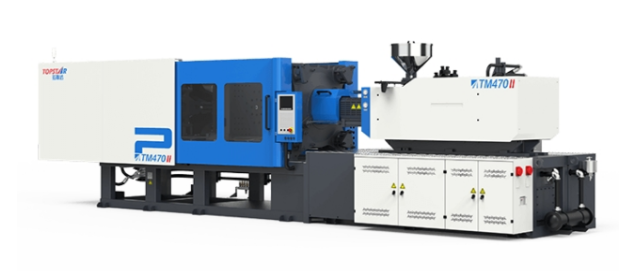What is the difference between a single and multi-cavity mold for an injection molding machine
Injection molding is a widely used plastic manufacturing process that produces plastic parts with complex geometries. The choice of mold design is crucial in determining the efficiency and cost-effectiveness of the production process. As experts in injection molding machine technology, we will explain the differences between single-cavity and multi-cavity molds so that you can understand the main differences of each mold type through this article.
Single-cavity molds for injection molding machine
A single-cavity mold is used in injection molding machines to produce one part per cycle. This mold design consists of a single cavity, where the molten plastic is injected, cooled, and solidified to form the final part. Single-cavity molds are generally used to produce large parts or small batches.
Its main advantage is that it is simple and does not require complex machinery and tools, making it a cost-effective choice for small-batch production. In addition, single-cavity molds allow for better molding process control, allowing for detailed adjustments to achieve the desired part quality. Products. However, the disadvantage of single-cavity molds is their limited production capacity. Since the machine produces only one part per cycle, it achieves a lower overall output rate than multi-cavity molds.
Multi-cavity molds for injection molding machine
Multi-cavity molds are suitable for producing multiple parts per cycle, significantly increasing the production capacity of injection molding machines. These molds contain multiple cavities, each forming a separate part during molding.
Their main advantage is producing many parts in a shorter period. Increasing the number of cavities significantly increases the output rate, reducing production time and costs. This makes multi-cavity molds the best choice for high-volume production, such as automobiles and consumer products. However, compared to single-cavity molds, multi-cavity molds are more complex and expensive to design and manufacture. Increasing the number of cavities requires precision machining and assembly, and multi-cavity molds require more advanced injection molding machines.
Difference in cost
There is also a big difference in cost when choosing between single-cavity and multi-cavity molds for injection molding machines. The upfront cost is generally lower since single-cavity molds have a more straightforward design and manufacturing process. In addition, single-cavity molds require less maintenance and are easier to repair, reducing operating costs. On the other hand, multi-cavity molds have a higher initial cost due to their complexity and the need for precision machining. The design and manufacture of multi-cavity molds involve more complex processes, including creating multiple cavities, runners, and cooling channels. In the long run, the increased production capacity of multi-cavity molds can bring significant cost savings.
Difference in quality
Using single-cavity molds in injection molding machines allows for better molding process control, allowing precise adjustments to achieve the desired part quality. With single-cavity molds, manufacturers can focus on optimizing the molding parameters of a single part, ensuring consistent quality and reducing the risk of defects. In addition, single-cavity molds are more accessible to troubleshoot and maintain, improving reliability and consistency. Although multi-cavity molds have higher production capacity, they face more challenges in maintaining consistent quality across all cavities. The increased complexity of multi-cavity molds requires precise injection process control to ensure uniformity of temperature, pressure, and material flow.
Production Efficiency and Cycle Time
When choosing between single-cavity and multi-cavity molds for injection molding machines, single-cavity molds, while offering better control and precision, have longer cycle times because they only produce one part per cycle. This results in lower production efficiency and longer total production time, making single-cavity molds less suitable for high-volume production runs. On the other hand, multi-cavity molds significantly increase production efficiency by producing multiple parts per cycle. This reduces total cycle time and increases output, making multi-cavity molds ideal for high-volume production runs.
Make the right choice for your situation
By understanding the differences between these mold types in the guide and evaluating the needs of specific applications, manufacturers can make an informed decision that meets their production goals and objectives. Whether it is the precision and control of a single-cavity mold or the efficiency and productivity of a multi-cavity mold, each option has unique advantages that meet different manufacturing requirements.



